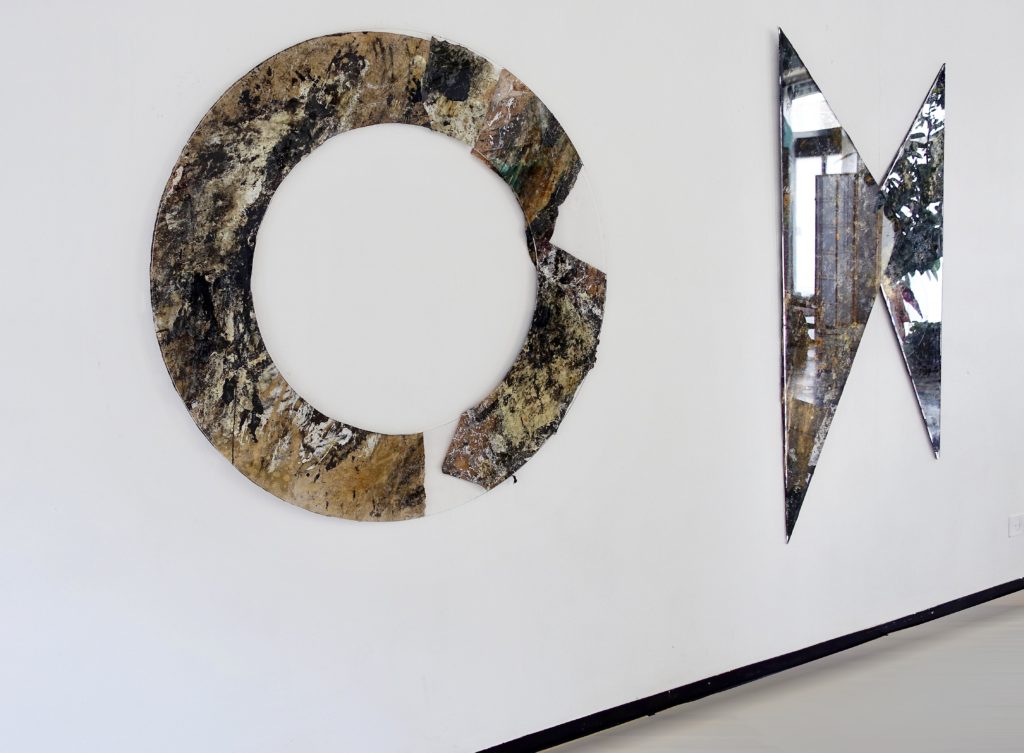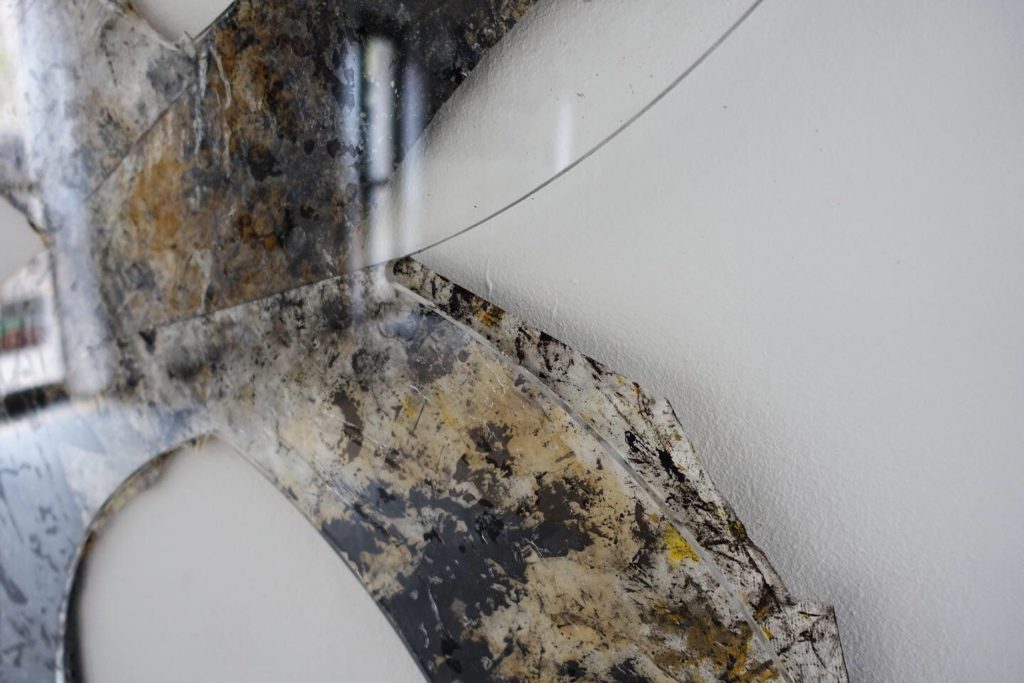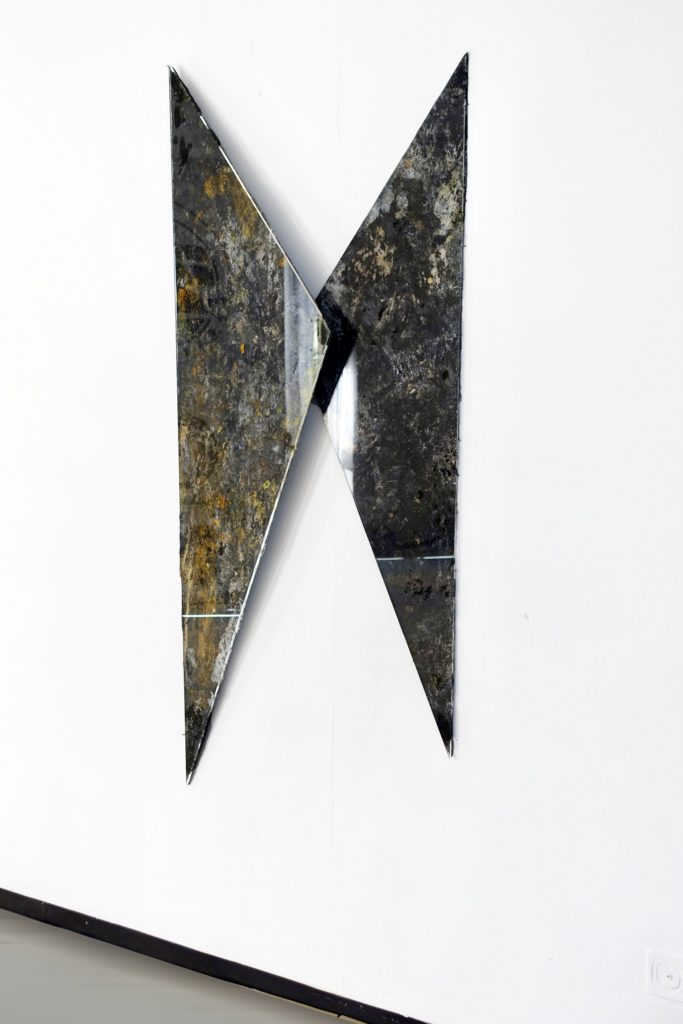ARTIST STATEMENT
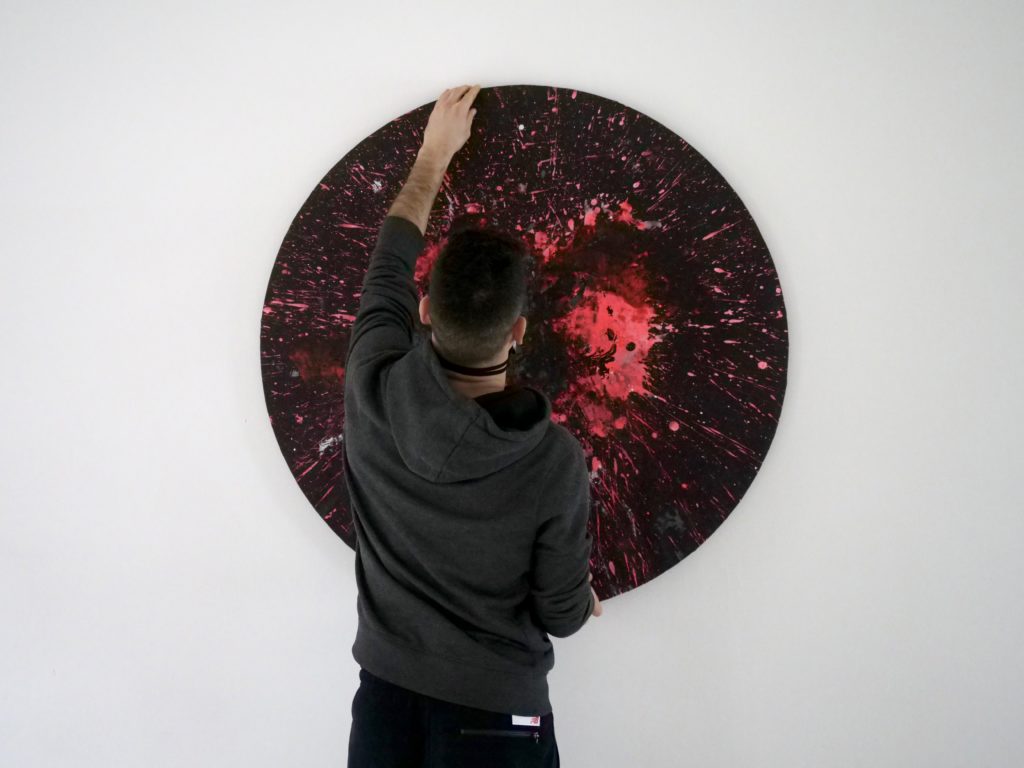
ARTIST STATEMENT

Isaia Antonaci (born in Sesto San Giovanni, 1985) trained in Painting at the Brera Academy of Fine Arts, developing a path that merges physical action and a transcendent dimension. His research originates from a post-vandal aesthetic, rooted in the underground scene and shaped by a long-standing practice of martial arts—elements that have transformed gesture from impulsive act into an essential, conscious, and meditative language.
At the core of his work lies the relationship between fullness and emptiness: each piece becomes a space for listening, where matter and absence are held in balance, and painting becomes an act of presence. The surface turns into a field of tension between interior and exterior, permanence and dissolution. Fragmentation and reconstruction of experience emerge as metaphors for the human condition: each work is built through layers, fractures, transparencies, silences.
Urban aesthetics evolve into an introspective code. Vandalism, in its origin, is a form of primal expression—a need to leave a mark, to exist in space through gesture. In this process, the brutality of the sign becomes ritual, the surface transforms into a sensitive skin: the wall, once a space of urgency, becomes a place of suspension. The underground memory remains as a visceral echo, yet is internalized into a form of visual discipline. Thus, post-vandalism merges with a contemplative tension, where gesture is no longer affirmation, but listening: a rarefied presence that allows identity to emerge as a trace, not as imposition.
As in the martial gesture, the pictorial action is not forced, but allowed to happen. It is a dialogue with matter that generates minimal forms, suspended surfaces, and imperceptible marks that reflect time, memory, and identity.
INSTALLATIONS FOR CONTEMPORARY SPACES
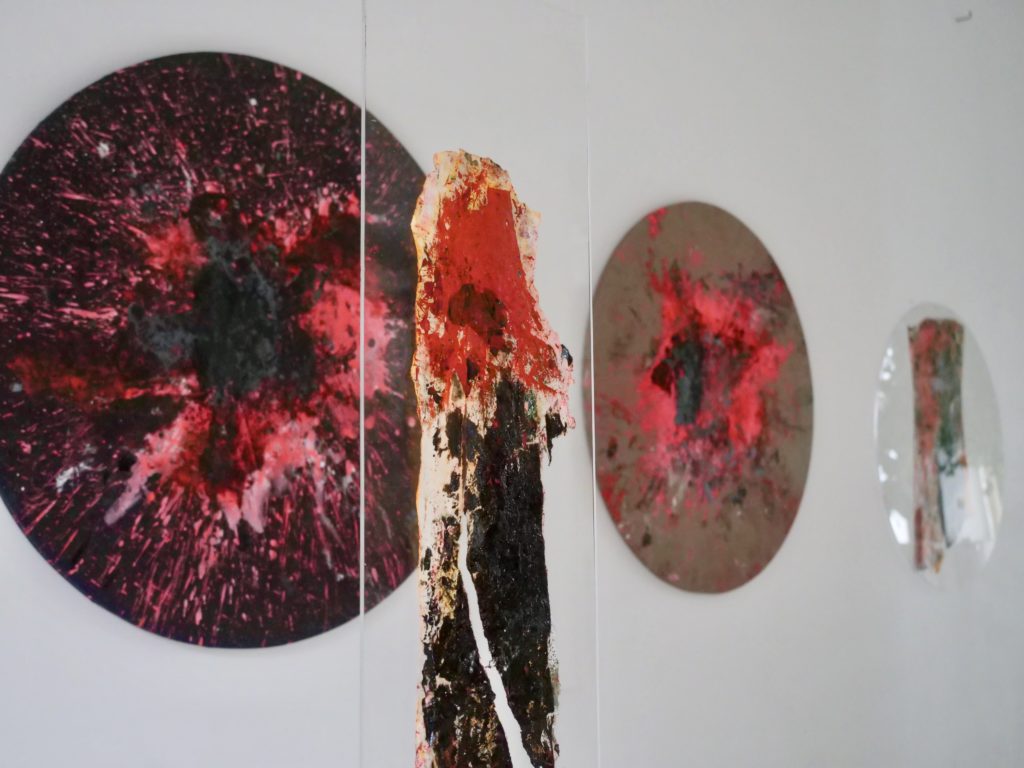
My work stems from an independent artistic practice, yet it opens itself to dialogue with architecture, light, matter, and emptiness. Each piece is conceived to transform space in a silent yet radical way, through a balance of gesture, sign, and suspension.
I work with variable formats, ranging from small, intimate interventions to large-scale environmental works, with the aim of adapting each piece to its hosting context and to the relationship it can establish with those who inhabit or move through the space.
The installations take on various forms of display, designed for both public and private environments:
– Canvases created through a subtractive technique, where the mark is incised, scraped, or abraded, allowing light to filter through the surface. Made with fluorescent or reflective pigments, these works react to light, altering visual perception and depth. They can be installed on walls or suspended, becoming dividers, luminous diaphragms, or tools for creating immersive atmospheres.
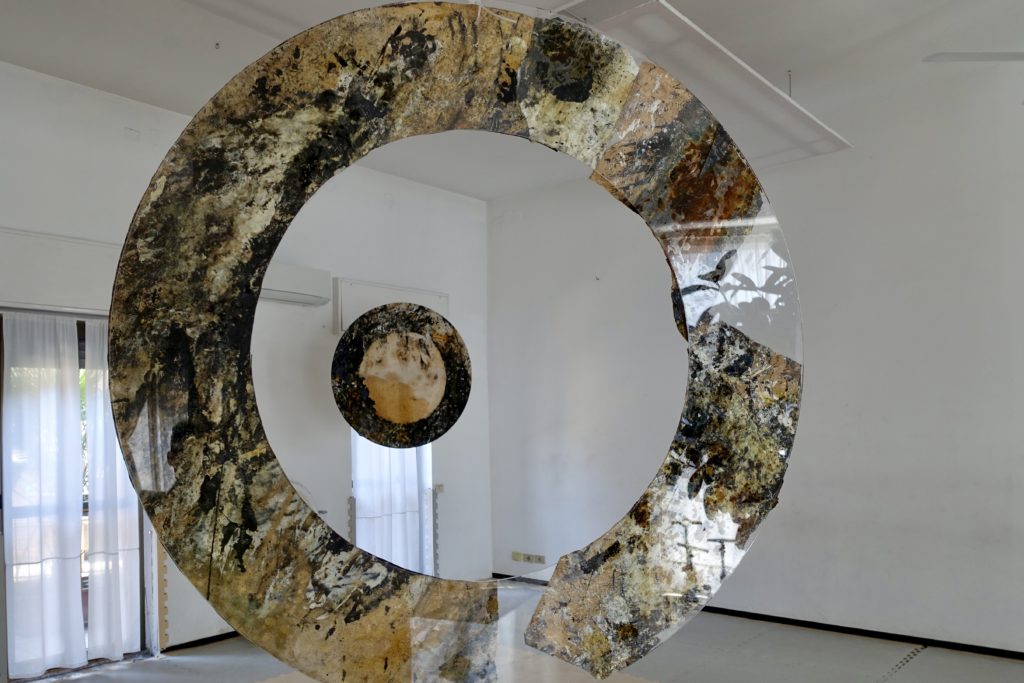
– Suspended works on plexiglass or lightweight materials, engaging with aerial space and natural light to evoke a sense of lightness and movement.
– Circular canvases designed for suspension, introducing floating forms and a delicate, organic presence into the architectural space.
– Site-specific material elements, conceived for showrooms, boutiques, hotels, studios, or private residences, in direct relation with surfaces, volumes, and the identity of the space.
– Custom-made works, unique and contextual, designed starting from the meaning and function of the space that hosts them.
Each intervention emerges from a research on gesture, the body, and the relationship between presence and absence. I enjoy working directly within spaces, studying their volumes, flows, and light qualities, in order to create alternative dimensions of the artwork—dimensions that extend beyond the surface and expand into the environment.
